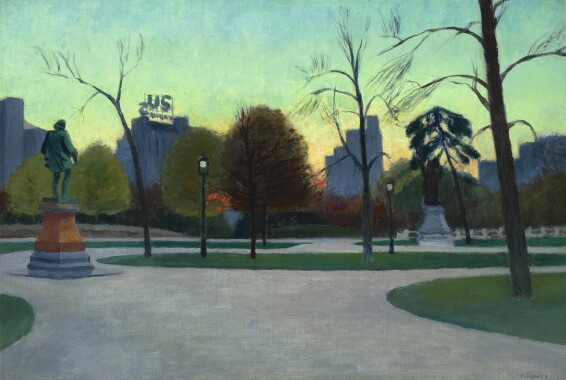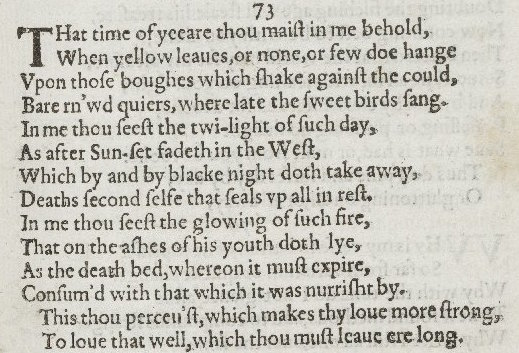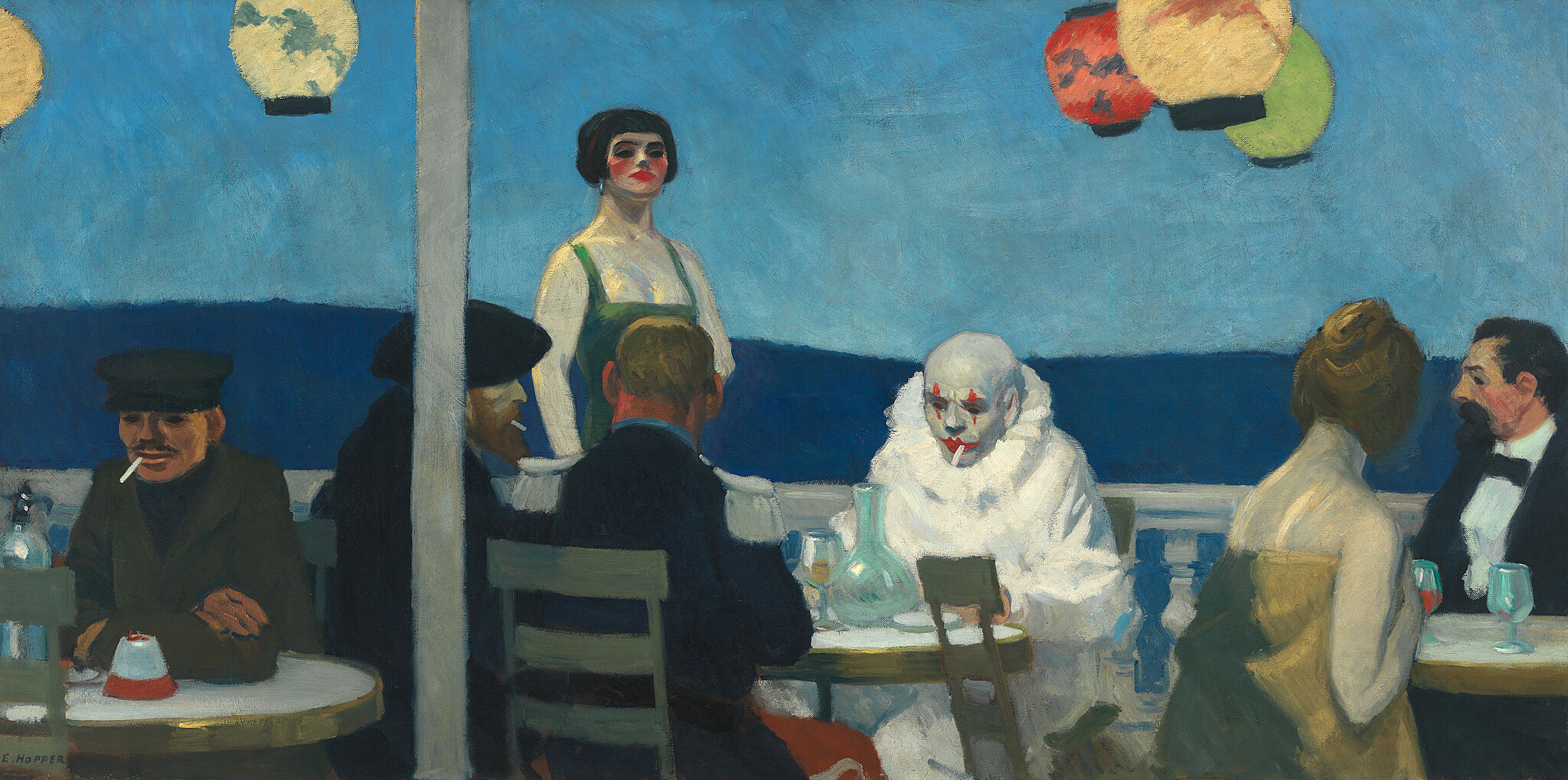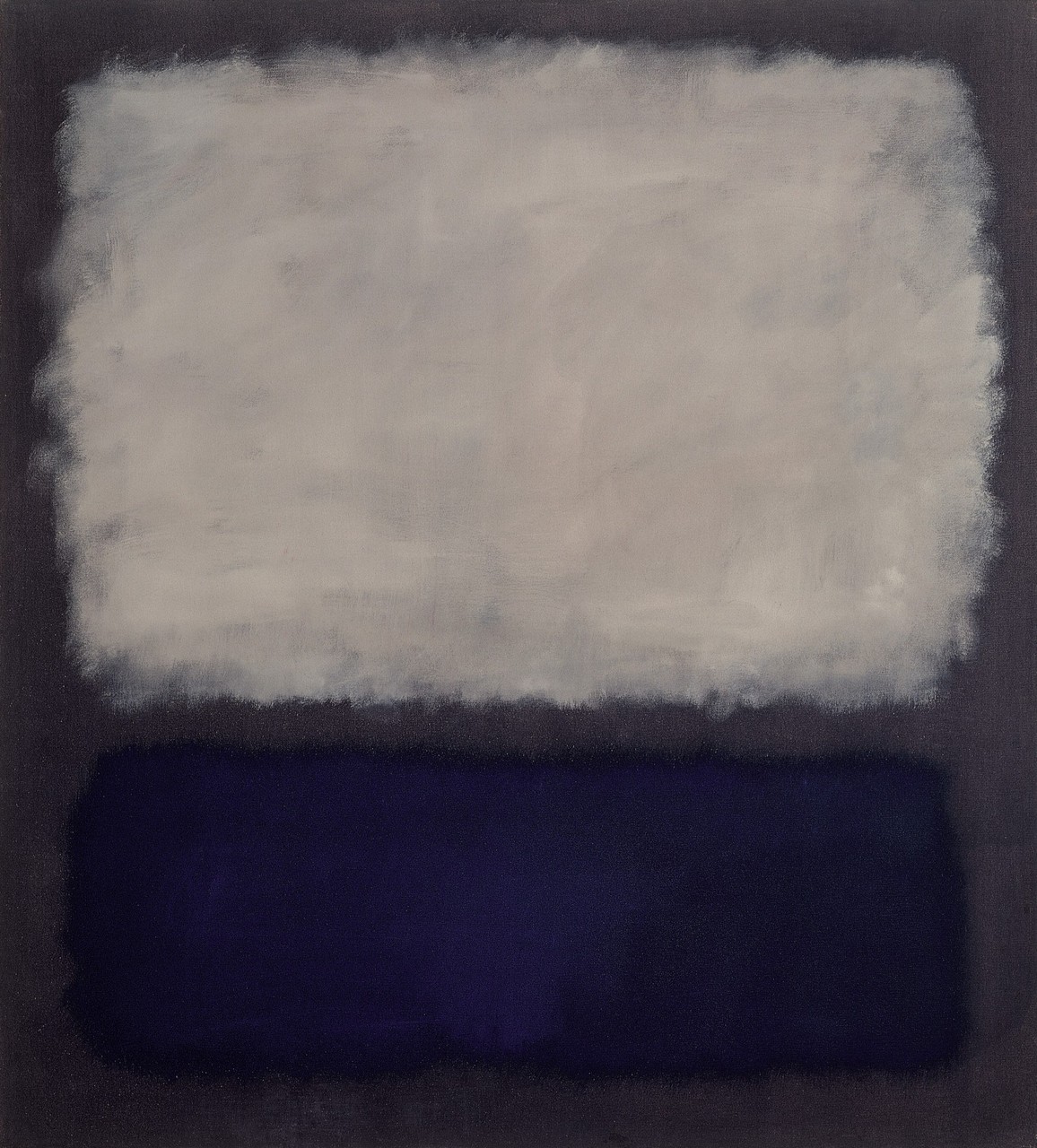M
I
C
R
O
S
T
O
R
Y
O
F
A
R
T
........................................................

NOW COMPLETED:

........................................................
MICROSTORY OF ART
ONLINE JOURNAL FOR ART, CONNOISSEURSHIP
AND CULTURAL JOURNALISM
........................................................
INDEX | PINBOARD | MICROSTORIES |
FEATURES | SPECIAL EDITIONS |
HISTORY AND THEORY OF ATTRIBUTION |
ETHNOGRAPHY OF CONNOISSEURSHIP |
SEARCH

........................................................



 >MICROSTORIES
>MICROSTORIES
- Richard Serra
- Martin Scorsese
- Claude Simon
- Sunshine
- Werner Herzog
- The Creation
- Marcel Duchamp
- Nino Rota
- Wölfflin and Woolf
- Hansjörg Schneider
- Kraftort Arkadien
- Visual Biography
- Schlaraffenleben
- Die Geisteswissenschaften
- The Voyeur
- Buzzword Sustainability
- Paul Verlaine
- Tao Yuanming
- New Beginning
- Seneca
- Still Lifes
- Charles Baudelaire
- Frédéric Chopin
- The Art History of Sustainability
- Wang Wei
- Solarpunk
- Historians of Light
- Lepanto
- Renaturalization
- Plates
- Snow in Provence
- Learning to See
- Picasso Dictionaries
- Peach Blossom Spring
- Picasso Tourism
- Tipping Points
- Sviatoslav Richter
- Weather Reports
- Treasure Hunt
- Another Snowscape in Picasso
- Picasso in 2023
- Dragon Veins
- The Gloomy Day
- The Art of the Pentimento
- Reforestation
- The Status of Painting
- Emergency Supply
- Punctuality
- Watching Traffic
- Zhong Kui
- How Painting Survived the 1990s
- Confirmation Bias
- Sustainability and Luxury
- Garage Bands
- Picasso and Artificial Intelligence
- Eyes of Tomorrow
- Picasso in 2023 2
- Gluing Oneself to Something
- Suburbia
- Bamboo
- Sustainability and Carpe Diem 1
- Interviews with Bruegel
- Sustainability and Carpe Diem 2
- Coffee & Sugar
- Bamboo 2
- Picasso in 2023 3
- Sustainability and Carpe Diem 3
- Cherry Orchard
- Old Magazines
- Chance
- Nick Drake
- Harlequin
- The Smartphone & the Art Book
- Atlas Syndrome
- The Kitchen
- Atlas Syndrome 2
- Consideration
- Tori Amos
- School
- Orchard Auctioning Day
- The Hundred Years’ War
- Sócrates
- Chameleon
- Nefertiti Bust
- Picasso as a Computer
- Sunflowers
- Philemon & Baucis
- Ode to the Radio
- Childhood
- Wimmelbild
- Restitution
- Nick Drake 2
- Wishful Thinking
- Sundays
- The Independent Scholar
- September
- The Fisherman by Pirosmani
- Microadventure
- Sociology
- Salvator Mundi
- Chillon
- Appassionata
- Amber
- Homer
- Berlin
- Planet Walk
- Improvisation
- Seeing Picasso
- These Nice Kids
- Robber
- The One
- The Sea Turtle
- Zoo
- Through the Hush
- Wunderkammer
- I Do Not Seek, I Find
- Shopping Mall
- Food Hamper
- The Secretary
- This Gate
- Nor Rainy Day
- House on a Hill
- Beautiful Island
- Second-hand Bookstore
- Flat
- Slap in the Face
- Serra, Wenkenpark
- Apologies
- The Bells
- Nordmann Fir
- Picasso Wanting To Be Poor
- Picasso, Pirosmani
- A Brief History of Sculpture
- 24 Sunsets
- Rusty Phoenix
- Glove
- Wintry Stanza
- A Song
- Like A Beatle
- Catching An Orange
- Solar Bees
- Permaculture

 >FEATURES
>FEATURES
- Van Gogh On Connoisseurship
- Two Museum’s Men
- Ende Pintrix and the City in Flames
- Titian, Leonardo and the Blue Hour
- The Man with the Golden Helmet: a documentation
- Un Jury d’admission à l’expertise
- Learning to See in Hitler’s Munich
- Leonardo da Vinci and Switzerland
- The Blue Hour Continued
- The Blue Hour in Louis Malle
- Kafka in the Blue Hour
- Blue Matisse
- Blue Hours of Hamburg and LA
- A Brief History of the Cranberry
- The Other Liberale in the House
- The Blue Hour in Raphael
- Who Did Invent the Blue Hour?
- Monet on Sustainability
- Velázquez and Sustainability
- The Blue Hour in Guillaume Apollinaire
- Van Gogh on Sustainability
- The Blue Hour in Marcel Proust
- Picasso and Sustainability
- The Contemporary Blue Hour
- The Blue Hour in 1492
- The Blue Hour in Hopper and Rothko
- Hopper and Sustainability
- The Blue Hour in Ecotopia
- The Hour Blue in Joan Mitchell
- Explaining the Twilight
- The Twilight of Thaw
- The Blue Hour in Pierre Bonnard
- Explaining the Twilight 2
- Picasso on Stalin
- Rubens on Sustainability
- The Salvator Mundi in Bruegel and Rubens
- The Blue Hour in Leonardo da Vinci and Poussin
- The Blue Hour in Rimbaud
- Faking the Dawn
- Frost and Thaw in Ilya Ehrenburg
- Picasso, Stalin, Beria
- Picasso, Solzhenitsyn and the Gulag
- Shostakovich on Picasso
- Hélène Parmelin in 1956
- Historians of Picasso Blue
- Picasso Travelling to Moscow 1
- The Blue Hour in Caravaggio
- Picasso Travelling to Moscow 2
- Picasso, the Knife Game and the Unsettling in Art
- Some Notes on Leonardo da Vinci and Slavery
- Picasso Moving to the Swiss Goldcoast
- The Blue Hour in Camus
- The Blue Hour in Symbolism and Surrealism
- Caspar David Friedrich in His Element
- Exhibiting the Northern Light
- Caspar David Friedrich in His Element 2
- Robert Schumann and the History of the Nocturne
- The Blue Hour in Robert Schumann
- Caspar David Friedrich and Sustainability
- The Twilight of Thaw 2
- Multicultural Twilight
- The Blue Hour in Anton Chekhov
- The Blue Hour in Medieval Art
- Twilight Photography
- The Blue Hour in Bob Dylan
- Iconography of Optimism

 >SPECIAL EDITIONS
>SPECIAL EDITIONS
- Visions of Cosmopolis
- Mona Lisa Landscapes
- Turner and Ruskin at Rheinfelden
- Painters On TV & On TV
- Spazzacamini in Art
- A Last Glance at Le Jardin de Daubigny
- The Experimental Cicerone
- A Dictionary of Imaginary Art Historical Works
- Iconography of Blogging
- Begegnung auf dem Münsterplatz
- Cecom
- Das Projekt Visual Apprenticeship
- Those Who See More
- A Fox on Seeing with the Heart
- Sammlung Werner Weisbach
- Daubigny Revisited
- Some Salvator Mundi Microstories
- Some Salvator Mundi Afterthougths
- Some Salvator Mundi Variations
- Some Salvator Mundi Revisions
- A Salvator Mundi Questionnaire
- A Salvator Mundi Puzzle
- Unknown Melzi
- Francis I and the Crown of Charlemagne
- From Amboise to Fontainebleau
- Drones Above Chambord
- Looking Back At Conques
- Flaubert At Fontainebleau
- Images of Imperial Ideology
- The Chronicles of Santa Maria delle Grazie
- Seeing Right Through Someone
- Melzi the Secretary
- Eying Glass
- A Foil to the Mona Lisa
- A Renaissance of the Cartoon
- Sketching a Family Tree
- Venetian Variations
- A Brief History of Digital Restoring
- A Consortium of Painters
- Leonardeschi and Landscape
- A Christ in Profile
- Learning to See in Spanish Milan
- A History of Gestures
- Leonardo and Josquin
- A Renaissance of the Hybrid
- Suida and Heydenreich
- The Watershed
- Three Veils
- From Beginning to End
- Connoisseurship of AI
- Twilight and Enlightenment
- The Blue Hour in Chinese Painting
- Dusk and Dawn at La Californie
- Iconography of Sustainability
- The Blue Hour in Goethe and Stendhal
- The Sky in Verlaine
- The Blue Hour in Paul Klee
- Iconography of Sustainability 2
- The Blue Hour in Charles Baudelaire
- From Bruegel to Solarpunk
- Some Salvator Mundi Documentaries
- Some More Salvator Mundi Monkey Business
- The Windsor Sleeve
- Brigitte Bardot’s Encounter with Picasso
- Art Historians and Historians
- A Salvator Mundi Chronicle
- The Salvator Mundi and the French Revolution
- The Fontainebleau Group
- The Encounter of Harry Truman with Pablo Picasso
- The Fontainebleau Group Continued
- The Windsor Sleeve Continued
- The Salvator Mundi in Early Netherlandish Painting 1
- Some Salvator Mundi Resources
- A New Salvator Mundi Questionnaire
- The Woman in Picasso
- The Yarborough Group
- Melzi, Figino and the Mona Lisa
- The Yarborough Group Continued
- A Salvator Mundi Global History
- The Salvator Mundi in Medieval Art
- The Salvator Mundi in Medieval Art 2
- The Salvator Mundi in Early Netherlandish Painting 2


 >HISTORY AND THEORY OF ATTRIBUTION
>HISTORY AND THEORY OF ATTRIBUTION
- The Mysterious »Donna Laura Minghetti-Leonardo«
- Assorted Demons of Connoisseurship
- Panofsky Meets Morelli
- Discovering the Eye of Sherlock Holmes
- Handling the Left-handed Hatchings Argument
- Visual History of Connoisseurship
- Alexander Perrig
- Connoisseurship in 2666
- What Postmodernity Has Done to Connoisseurship
- Dividing Four Fab Hands
- A Leonardesque Ambassador
- Test Cases in Connoisseurship
- A Raphael Expertise
- How to Tell Titian from Giorgione
- Louise Richter
- The Unique Property in the History of Connoisseurship
- An Expertise by Berenson
- The Book of Expertises
- An Album of Expertises
- An Expertise by Friedländer
- A Salvator Mundi Provenance
- How to Tell Leonardo from Luini
- An Expertise by Crowe and Cavalcaselle
- An Expertise by Bayersdorfer
- An Expertise by Hermann Voss
- An Expertise by Hofstede de Groot
- Leonardeschi Gold Rush
- An Unknown »Vermeer«
- An Expertise by Roberto Longhi
- An Expertise by Federico Zeri
- A Salvator Mundi Geography
- A Salvator Mundi Atlas
- The Bias of Superficiality
- 32 Ways of Looking at a Puzzle
- James Cahill versus Zhang Daqian
- Five Fallacies in Attribution
- On Why Art History Cannot Be Outsourced to Art Dealers
- On Why Artificial Intelligence Has No Place in Connoisseurship
- Salvator Mundi Scholarship in 2016
- Leonardo da Vinci at the Courts
- The Story of the Lost Axe
- The Last Bruegel
- A Titian Questionnaire
- On Where and Why the Salvator Mundi Authentication Did Fail
- The Problem of Deattribution

 >ETHNOGRAPHY OF CONNOISSEURSHIP
>ETHNOGRAPHY OF CONNOISSEURSHIP
MICROSTORY OF ART
ONLINE JOURNAL FOR ART, CONNOISSEURSHIP
AND CULTURAL JOURNALISM
........................................................

***
ARCHIVE AND FURTHER PROJECTS

1) PRINT


***
2) E-PRODUCTIONS


........................................................

........................................................

........................................................
FORTHCOMING:


***
3) VARIA

........................................................

........................................................

........................................................

........................................................

........................................................
***
THE GIOVANNI MORELLI MONOGRAPH

- The Giovanni Morelli Monograph
........................................................
MICROSTORY OF ART
ONLINE JOURNAL FOR ART, CONNOISSEURSHIP AND CULTURAL JOURNALISM
HOME
The Blue Hour in Hopper and Rothko
(23.9.2022) Poet William Shakespeare is not the inventor of the ›blue hour‹ expression, but spoke of twilight and darkness in his sonnet 73. How do I know that? There might be many a reason to know that, but one is that Sotheby’s is teaching us poetry. In recent years a painting by American painter Edward Hopper, a painting named Shakespeare at Dusk, got to auction, and the background informations Sotheby’s was/is providing us with are written with great care, informing us on something we might know anyway, but it cannot be enough repeated: that painter Edward Hopper had been very much dedicated to poetry. Brian O’Doherty, when visiting Hopper in 1962, even spoke about poetry evoking atmospheres of dusk and dawn with Hopper on that occasion. We don’t know if Shakespeare got mentioned during that conversation, but Hopper did quote Verlaine (›l’heure exquise‹), and he did also mention Robert Frost, whose poem Come In he did admire.

(Picture: Sothebys.com)


(Picture of gas pumps: Noroton)
The last art exhibition I attended before the pandemic was the Edward Hopper exhibition at Fondation Beyeler at Riehen. I remember that it was rather crowded (early in February 2020 it was, I believe), and while the first cases of Covid-19 were reported only roughly two weeks later in our region, one yet had been alarmed to some degree, but more on a theoretical level, not knowing what exactly was to come on a level of society and human daily interaction.
Looking back I must say that, during the time of the pandemic, I never did feel like ›being in a Hopper painting‹. My personal experiences I would sum up in saying that now, after roughly 33 months, my views of the systems we are living in (or: modern society is living in) has become more realistic, as has, I believe, my view of society and anthropology. I think that it makes sense to come back now to an art exhibition I certainly would have attended more than once. And one reason might be, a rather personal reason, a personal interest, that Edward Hopper was so much interested in poetry, and also in the atmospheres of dusk and dawn.
And if I am looking at the blue hour in Hopper and Rothko here, this has something to with Fondation Beyeler as well. Because, while strolling through the exhibition of a figurative realist painter, one is always tempted, at Riehen, to sneak also into other rooms, where you might be confronted with large, large abstract expressionist paintings for example, that, confronted with Hopper, do look, if perhaps only for a moment, as if they would be magnifying what Hopper is showing us in realist, illusionistic detail. Such canvases seem to be zooming into a particular atmosphere of light – in Hopper –, and seem to be saying something like: ›this is what you see in Hopper, since also a Hopper painting is something artificial in the end, made of color patches, brushstrokes or dots, but yes, carefully chosen patches, brushstrokes or dots, because Edward Hopper, as is well known, was so obsessed with light and eager also to paint the light itself, and less the object it just falls on‹.
We see three examples of Hopper paintings here, and, accidentally or not, these three examples are referring to three paradigms also of the blue hour in poetry. Shakespeare at Dusk is referring, obviously to the poet who did evoke twilight as the passing phase leading to darkness, »death’s second self that seals up all in rest«, while the late 19th century in French poetry, with Rimbaud (the actual inventor of the ›blue hour‹ expression, as it seems) and Verlaine, might also agree with Shakespeare, but stresses, enjoys and celebrates also the beauty of dusk and dawn, and while poet Robert Frost, in some sense, the third paradigm, has a synthesis of both, evoking luring woods and the luring singing of a bird that can’t be seen (in Come In), which might be recalling luring beauties one better does or has to resist. The iconic Hopper painting Gas had been also in the Riehen show, and, of course, Hopper interpreters find in this work exactly what Frost is speaking of, in a scenery wherein artificial and natural light are mixing.
Soir Bleu by Hopper, a painting that, in retrospect, is also evoking his Parisian experiences, and certainly can be seen in the context of Rimbaud and Verlaine. Artificial lights, lanterns, perhaps with exotic connotations, can be seen here at dusk, while in Gas we have the lights of the gas station itself, the lights of the gas pumps, and the light of a sign, illuminating a scenery with dark, and perhaps luring woods, as well as a street, offering a path into darknesses (or towards whatever there might be luring).

(Picture: Whitney.org)

(Picture: wikiart.org)
The blue hour in Rothko cannot be found in Rothko’s paintings. This has to be stressed here (to avoid misunderstanding that Rothko, widely seen as an abstract painter, yet is a sort of landscape painter; and to avoid misundertanding that Blue and Grey, which is the example we see here – it is at Riehen – might be the representation of a blue hour – it is not). Abstract painting has to be taken serious in that it wants to be abstract, and to understand better what Rothko actually is doing (at least in my understanding), we have to recall two little episodes of art history:
Kandinsky, as is well known, experienced something at dusk: seeing his own paintings at dusk in his own studio, Kandinsky did not recognize his own paintings at first, only to enjoy the experience of seeing them in this particular atmosphere a little later, and newly discovering, re-discovering his own paintings – as abstract paintings. In other words: dusk had helped him in finding his way towards abstraction. Rothko biographers have recalled similar episodes of the painter lying on a sofa in the evening in his own studio, while listening to music and while contemplating his own paintings. But to understand what Rothko is doing in his abstract paintings, it might be helpful to recall also that, early in his career, Rothko had been asked to help illustrate a Bible edition. Why is this helpful to understand Rothko as an abstract painter? Because Rothko did in painting, later, what the Book of Psalms does in poetry. The psalms do stage humans in a relation to God, by means of language: they psalms do praise, but they also do complain. A broad range of moods can be encountered in the psalms, as mixed as human experience in life can be. The psalms, in one word, do offer a broad range of experiences, of ›colors‹ this relation can take on. How would Rothko have ›illustrated‹ the psalms?
Rothko did not illustrate the psalms, but as a painter, Rothko did stage the relation of himself as well as that of a viewer, with color fields; and in my understanding, these fields do not offer a dynamic encounter with a sort of pantone set in shape of large canvases, but these color fields a viewer is delving in, do represent (not in a representational, realist way, of course, but still) a metaphysical space, just as the psalms do this by means of language. In the relation of a viewer with these bright or dark color fields, exactly the broad range of experiences one can find in the psalms, finds a parallel. Hymns or complaints we hear, dark or bright color fields we do encounter, offering various experiences to a viewer, inclined to delve into such experience, bringing into this experience also his own inclinations, moods etc. What Rothko does, in one word, is an equivalent to the psalms – in painting. And we find a parallel to Hopper in Rothko – in that both painters can be understood, better understood perhaps, or only understood at all, if we take the relation of these painters to poetry into consideration. In Hopper, as in Rothko. And, certainly, at Riehen. Blue and Grey is not the representation of a blue hour, but offers to the viewer what an abstract painting can offer: to bring in own experiences and associations. And this might include our personal view of dusk and dawn, of luring experiences, of dark experiences, and the abstract painting, to be sure, is not determining what a viewer is experiencing and what might be the result of such encounter. This is up to the viewer to find out, with the painting, which might even change mood – for a viewer – during such encounter.
MICROSTORY OF ART
ONLINE JOURNAL FOR ART, CONNOISSEURSHIP AND CULTURAL JOURNALISM
HOME
© DS